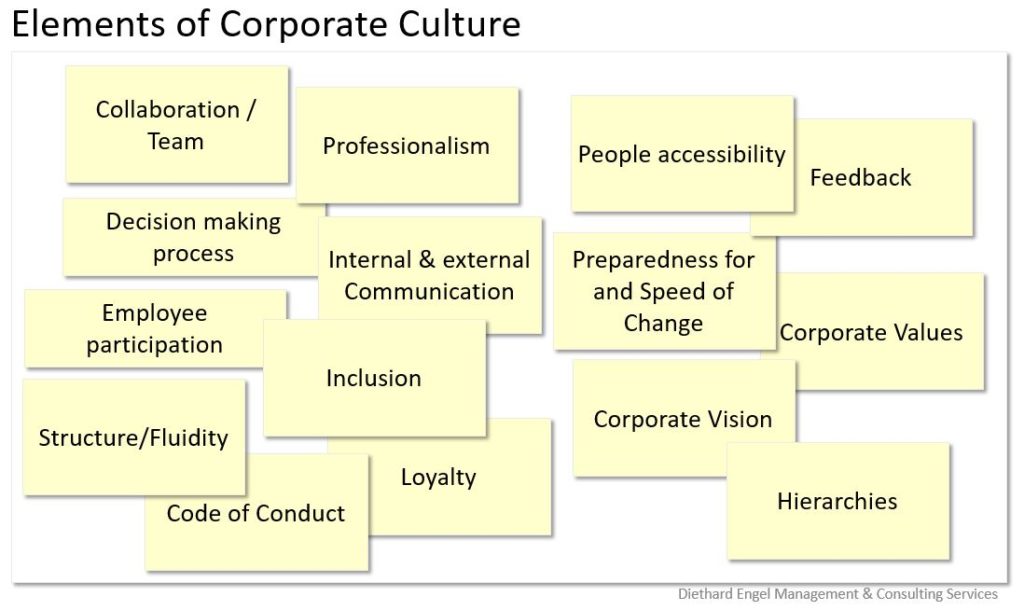Understanding corporate culture is difficult – that’s why it’s ignored in many post-merger integrations. It does not have to be like this.
Cultural integration has proven to be a key success factor in merger execution: Most acquirers claiming a successful integration say they have considered cultural aspects in the PMI process. In order to be able to address culture, obviously one got to understand what “culture” means, first. In short, corporate culture is the sum of all elements impacting on people or organizational behavior.

Culture is qualitative by nature, and therefore difficult to measure, however, that does not mean it wouldn’t be measurable: Rankings or ratings are frequently used to gauge non-quantitative parameters. Identification of those elements meaningful to a specific target culture is key to a successful integration: Symbols, stories and rituals on one hand, and specific behaviors and processes on the other dictate how people feel and act.

Corporate culture is directly reflected in leadership behavior. Therefore, change to culture requires change to leadership behavior, which leads to my
Rule #8: Cultural change often transpires to change to leadership.
Acquirers should know who will lead in future, and whether the designated leadership will live the desired culture. Walk the talk is more than just a proverb: It is what employees see, and eventually imitate. Depending on the scale of cultural gaps, bringing in outside leadership may be an option worth considering.
The degree of formality in a business may determine the amount of leadership change an organization can endure: Knowhow and personal relationships are assets an acquirer has paid a price for. However, the less formal an organization, the more it relies on leadership and continuity. This may limit the ability to stipulate cultural change through leadership team changes.
Trying to change an entire business culture may overwhelm the organization. Rather think about a few elements that are key to the success of the new (joint) business, and target these for change. As a result, the team will focus on managing meaningful differences, and not take away cultural elements which are not critical to business performance, but important to people and their microcosm.
Diethard Engel is an independent consultant and interim manager, focused on Business Transformation, Post-merger Integration / Carve-out and Executive Finance. He has run multiple post-merger integration/carve-out projects for international businesses.

2 Gedanken zu „Inside Post-merger Integration (8): Merging Culture“
Kommentare sind geschlossen.